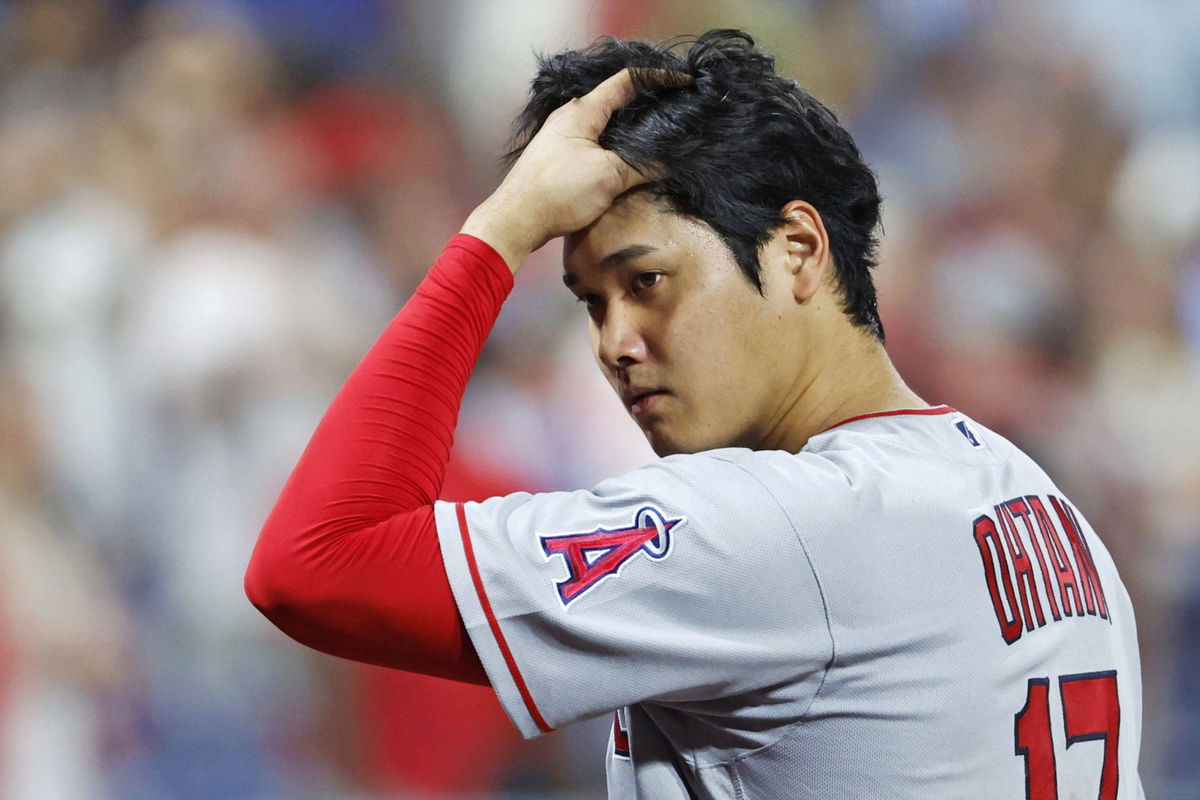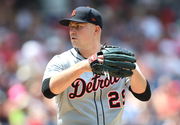
Imago
Baseball: Angels vs. Phillies Shohei Ohtani of the Los Angeles Angels is pictured after the team s defeat to the Philadelphia Phillies in a baseball game at Citizens Bank Park in Philadelphia on Aug. 29, 2023. PUBLICATIONxINxAUTxBELxBIHxBULxCZExDENxESTxFINxFRAxGEOxGERxGRExHUNxISLxIRLxITAxLATxLTUxLUXxLIExMKDxNORxPORxPOLxROUxSVKxSUIxSRBxSLOxESPxTURxUKxUAExONLY A14AA0001811711P

Imago
Baseball: Angels vs. Phillies Shohei Ohtani of the Los Angeles Angels is pictured after the team s defeat to the Philadelphia Phillies in a baseball game at Citizens Bank Park in Philadelphia on Aug. 29, 2023. PUBLICATIONxINxAUTxBELxBIHxBULxCZExDENxESTxFINxFRAxGEOxGERxGRExHUNxISLxIRLxITAxLATxLTUxLUXxLIExMKDxNORxPORxPOLxROUxSVKxSUIxSRBxSLOxESPxTURxUKxUAExONLY A14AA0001811711P
Remember 6x All-Star Bobby Bonilla? Up until 2035, he will be receiving a $1.19 million payday every year from the New York Mets, thanks to a deferred contract deal. This whole setup was masterminded by Steve Phillips, the Mets’ GM, back then. Fast forward to now, and the Los Angeles Dodgers are reviving this strategy in a big way. It’s not a new tactic, but they’re pushing it to new limits and crushing it this offseason, way ahead of anyone else. But what is a deferred contract? In elementary language – It’s when a player agrees to get a part of their salary later on, instead of getting it all while they’re actively playing under that contract. The Dodgers bagged Shohei Ohtani to a crazy $680 million deferral. But, come 2033, this might come to bite them.
Watch What’s Trending Now!
It might be a whole different ball game with that bill coming due, but that’s an issue for future them. For now, here’s the deal: this trend of pushing big bucks down the line in MLB, it’s got the baseball world worried. This offseason, the Dodgers have turned into a superpower through some high-profile signings, and still don’t seem to run out of money bags – all because of deferring contracts.
ADVERTISEMENT
Los Angeles Dodgers and their deferred contracts
Before the Dodgers landed Ohtani, they already had a pretty sweet lineup. They scooped up Freddie Freeman, fresh off a World Series win with the Braves, and locked him down with a $162 million contract for six years. Then, there’s Mookie Betts. The guy the Boston Red Sox let go (I will continue reminding every Red Sox fan of that trade horror). The Dodgers signed him to a $365 million deal over 12 years. Now, they’ve topped it all off with Ohtani, signing him for an eye-watering $700 million for a decade.

Reuters
Baseball – Shohei Ohtani Press Conference – Centerfield Plaza, Dodger Stadium, Los Angeles, California, United States – December 14, 2023 Shohei Ohtani during the press conference REUTERS/Aude Guerrucci
The reality of each of these contracts is:
ADVERTISEMENT
- Shohei Ohtani: $680 million of his contract is deferred. He’ll be receiving $68 million annually, but this only kicks in from 2034 to 2043.
- Mookie Betts: Betts has $120 million deferred in his contract. He’ll get $8 million per year from 2033 to 2037, then $10 million annually for 2038 and 2039, followed by $11 million each year from 2040 to 2044.
- Freddie Freeman: Freeman’s deal includes $57 million in deferrals. He’s set to earn $4 million per year from 2028 to 2035, and then $5 million annually from 2036 to 2040.
Watch This Story: Shohei Ohtani’s Two-Way Dream: Before Injury, He Always Wanted Both!
ADVERTISEMENT
Here’s the biggest shocker: Despite these high-profile signings, the Dodgers’ current payroll is only $177 million, which ranks them seventh in the league.
Top Stories
Blue Jays’ Embarrass NY Teams After Stealing $37M Mets Star as Kyle Tucker Deal Appears Likely

Blue Jays to Show Exit Door to 3 Playoff Stars as Ross Atkins Plans Major Changes: MLB Winter Meeting Rumors

Blue Jays Make Massive Offseason Powerplay While Bo Bichette & Kyle Tucker Remain Unsigned

Blue Jays’ Kyle Tucker–Bo Bichette Push Turns Toronto’s Mockery Into AL East Nightmare as Yankees Face New Threat

Mets Told to Steer Clear of Tarik Skubal Amid David Stearns Desperation to Woo Angry Queens Fans

How is Ohtani’s deferral helping the Los Angeles Dodgers?
Along with Ohtani, the Dodgers have signed pitchers Yoshinobu Yamamoto, Joe Kelly, Tyler Glasnow, and most recently outfielder Teoscar Hernandez. Their offseason expense in one season alone has surpassed what one would imagine – $1.2 Billion. This was all only possible after the deferred deal of the Japanese wonder boy. The funniest part, they didn’t even stop there.
ADVERTISEMENT
The Los Angeles Dodgers will pay Shohei Ohtani, Mookie Betts, & Freddie Freeman
2034: $80M
2035: $80M
2036: $81M
2037: $81M
2038: $83M
2039: $83M
2040: $84MFreddie’s contract ends. Ohtani & Mookie will cost $79M from 2041-2044
— Trent (@Trenciarte) December 12, 2023
Teoscar Hernández, the guy’s on a one-year deal. Yes, you read that right—just one year – it’s for a hefty $23 million, but even here, $8.5 million of that is deferred from 2030 to 2039. It’s one thing to get creative with building a team, but where’s the line? If this keeps up, are we heading towards one mega team ruling the roost?
Maybe MLB will step in, or maybe, just maybe, the sweetest twist would be watching the Dodgers, with their 100 wins, get knocked out by the Diamondbacks in the postseason. Now, that would be something. But back to these deferrals, they’re setting up a pretty dicey future for baseball.
ADVERTISEMENT
Is it actually good for MLB?
When big-money teams like the Dodgers play around with deferred contracts, it shakes things up in MLB. There’s no salary cap in baseball, which means the gap between the rich and not-so-rich teams gets even wider. The big guys can afford to push payments down the road, sort of like taking out a talent loan without the upfront costs. But the smaller teams? They don’t have that kind of cash to play with. This could end up with all the top players landing in the laps of a few loaded teams, which isn’t great for the game, in my opinion.
ADVERTISEMENT
About the players – these deferred deals can tie them down for ages, often not matching up with what they’re worth, especially as they get older or if they’re not playing as well. This means our seasoned pros might get a raw deal in their later years. That’s not exactly encouraging for the up-and-comers thinking about signing long term.
Bottom line—while these deferrals are a smart money move, their popularity among the richer clubs could throw off the balance of the game and not do much good for the players in the long haul. It’s a game-changer for MLB, but maybe not in the best way.
ADVERTISEMENT
ADVERTISEMENT
ADVERTISEMENT

